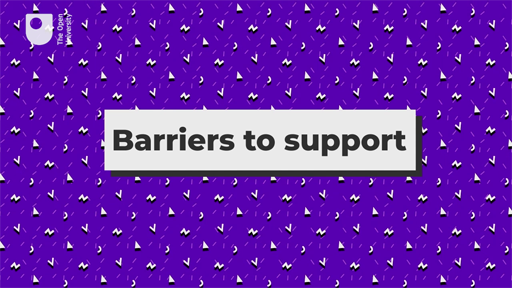1.2 Managing barriers
In Activities 1 and 2 of this session you have seen how social networks can nurture and strengthen a young person’s emotional health. Research has shown that participating in school-based extra-curricular activities can help to reinforce existing friendships and help new friendships to form (Schaefer et al., 2011). However, it is also important to note that socialising may be a trigger for some young people who feel socially anxious and/or depressed (Martin and Atkinson, 2020). ‘Withdrawal’ from social networks and family can characterise many mental health issues and exacerbates feelings of social isolation, and can also heighten stigma. Therefore, in thinking about a young person’s social network and the influence it has on a young person’s wellbeing, you might consider whether you can suggest ways it can be strengthened or supported. You may also wish to include reviewing any disruptive influences that you think there may be on the young person or improving your confidence in responding to distress. We turn to ways to do this in the next section.
Is it also important to note that a young person may not always want to confide in close family or friends, especially if they are concerned about stigma or worried that they will upset the relationship. It is important to understand barriers to accessing support and this is something we explore in the next activity.
Activity _unit8.1.3 Activity 3: Barriers to accessing informal social support
Listen to the young men we interviewed discuss how they perceive their friends might feel about reaching out for support in relation to mental health. Pay particular attention to any tensions they report in relation to how mental health is thought about by them and their peers.

Transcript: Video 3: Barriers to support
Answer
They start by talking about how some of the young men they know would be embarrassed to talk about their mental health because of the need to keep up a bravado. They also discussed the importance of mental health campaigns that help to reduce stigma. However, this was a source of disagreement among the young men as they reported varied opinions about whether this awareness can also create additional embarrassment. This disagreement is a further example of how individuals react and perceive information on mental health differently. Furthermore, it shows the importance of not making assumptions about how young people react to these campaigns.
As the clip you just listened to highlights, there is still a great deal of work to be done to get young men to open up about their emotions. Embarrassment seems to be a key barrier to talking about mental health, but there are things that we can do to support young people to enable them to discuss these issues.
Although a personal network is essential in many ways to support wellbeing and/or recovery from a mental health problem, it is important to acknowledge that supporting someone with mental health issues can be a challenge to us. This is something you’ll explore in the next section.
